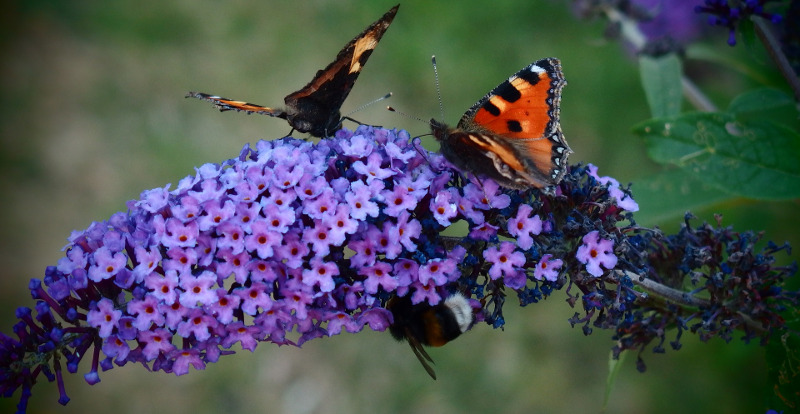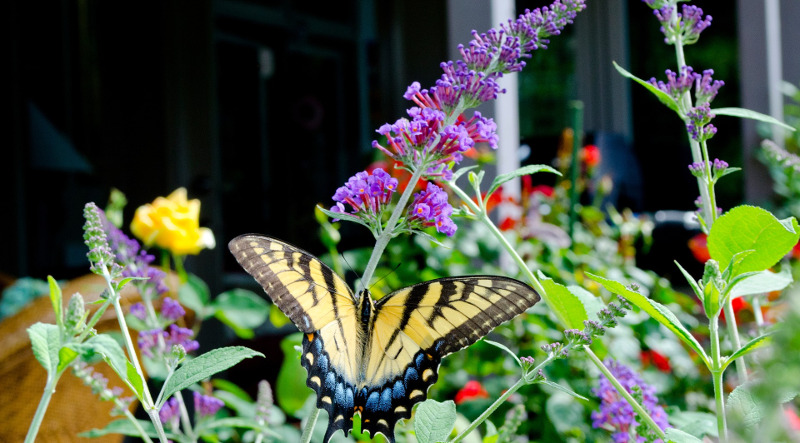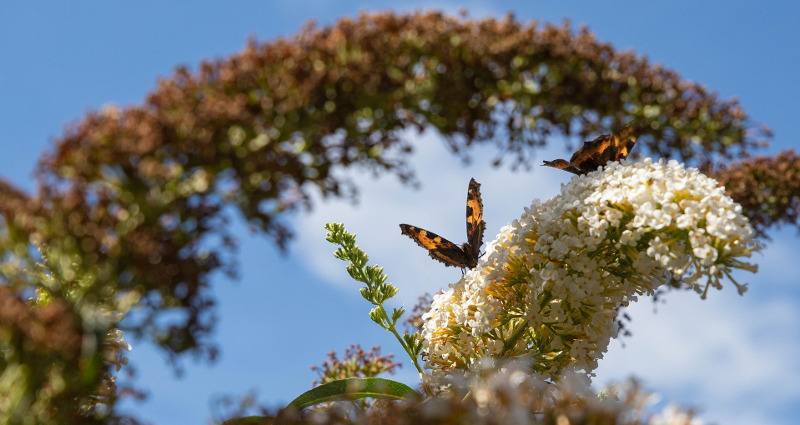Commonly known as butterfly bush, Buddleia (Buddleja) varieties are attractive, low-water and easy-care plants for gardens. Unfortunately, because some of the species has been classified as invasive in some populous areas of the country, misinformation abounds on growing this plant. We will explain the pros and cons of growing butterfly bushes, and list out several types of buddleia that are safe to grow throughout the United States. Here is the good and the bad of buddleia.

Why Are Butterfly Bushes Bad?
First, most buddleias are not native to North America. We agree that we need to favor native plants over non-native ones for several reasons including being better for wildlife in general, and requiring less water to grow.
Second, non-native plants can become invasive. Buddleia davidii plants have been declared invasive in most of the Pacific Northwest, areas along the California coast and on the eastern seaboard. That species also needs a little more water than some varieties as well.
However, there are counterpoints to both of those concerns. One of the best reasons for choosing natives is ability to adapt to conditions, such as low water use. Well, guess what? Butterfly bush is very drought tolerant after it is established and actually does poorly in soggy conditions too. The other concern about the plants being invasive is easily solved too.
There are several buddleia varieties that are native to North America (see below). And you can bet that as soon as plant breeders saw all the fuss about banning butterfly bushes, they got busy. So, there are plenty of sterile varieties available. That means they will not set seeds and make new plants that clutter and invade your landscape.
So when deciding whether or not to plant butterfly bush, just take some precaution on which variety to grow and there should be no downside in growing these beautiful plants!
Why Are Butterfly Bushes Good?
This is one of our favorite plants in the landscape. Here are some of our favorite features of buddleia:
- Butterflies flock to the aptly named plant (although it is not considered a “host” plant, butterflies enjoy the flowers’ nectar). So do hummingbirds. Don't rely on a buddleia as a sole source for helping butterflies, but it can be part of a pollinator landscape.

- Butterfly bushes bloom all summer, can take heat and need no deadheading (if in a dry climate or growing a sterile or noninvasive variety).

- Larger buddleias have winter interest and serve as a landing spot for winter birds.
- Water deeply once each spring after pruning. You only need to water other times during periods extreme heat and drought.
- You can prune butterfly bush to a foot or less above ground in early spring as new growth appears along the lower branches. Also remove dead branches. That’s all it needs to grow and bloom each summer.
- The bush is deer resistant, a big plus for mountain and high desert gardens.
Safe & Non-Invasive Buddleia Varieties
There are some butterfly bushes native to the Southwest United States and new hybrids with sterile flowers. Here are a few examples we recommend trying:
Lo and Behold Series Butterfly Bushes (Sterile)
Miss Series Butterfly Bushes (Sterile)
Native Butterfly Bushes
B. marrubifolia, also known as Orange Wooly Butterfly Bush, is native to the Chihuahuan desert, with whitish foliage and orange flowers.
B. utahensis, or Utah Butterfly Bush, is native to Utah, Arizona, California, and Nevada.
 |
Author Teresa Odle - Published 12-10-2020 |
